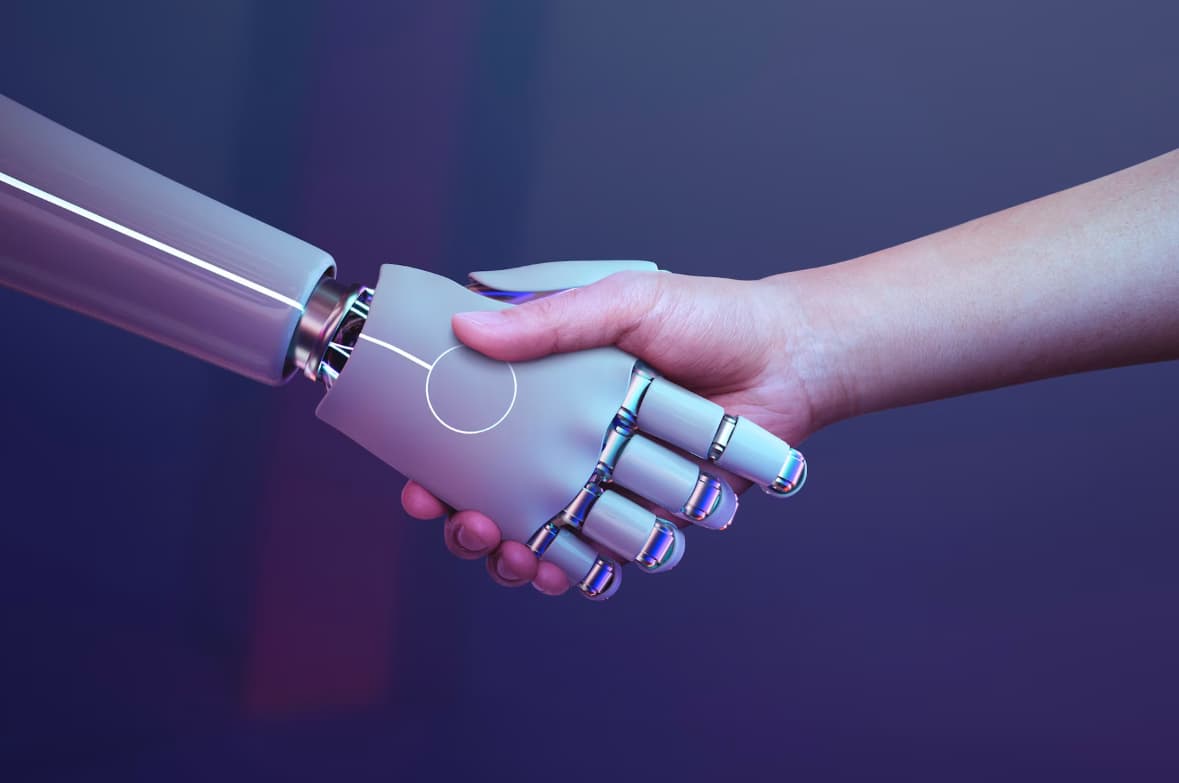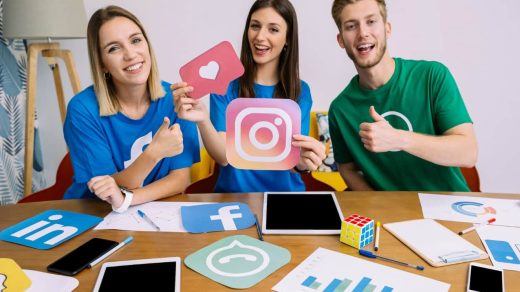In a world where technology shapes our daily lives, openai said man merge 2030 is more than just a prediction – it’s a glimpse into our potential future.
OpenAI, a leading artificial intelligence research organization, has painted a fascinating picture of how humans and AI might come together by the year 2030.
This isn’t just about robots or smart devices; it’s about a deep connection between human minds and artificial intelligence that could change everything about how we live, work, and think.
Imagine wearing a device that lets your brain connect directly with AI, helping you solve complex problems, learn new skills instantly, or even communicate without speaking.
While this might sound like something from a sci-fi movie, experts believe we’re getting closer to making it real.
This merging of human and machine capabilities could lead to what some call a “technological renaissance” – a time of incredible progress and innovation.
But what does this mean for everyday people like us? How will it change our jobs, relationships, and daily lives?
OpenAi Said Man Merge 2030

In this article, we’ll explore these questions using simple language and real-world examples.
We’ll look at both the exciting possibilities and important concerns about this technology, helping you understand what the future might hold.
What is OpenAI and How Does it Work?
OpenAI stands out as a key player in the world of artificial intelligence. Let’s break down what makes this organization special:
Core Features of OpenAI:
- Founded in 2015 with a clear mission: make AI beneficial for everyone
- Run by teams of scientists and tech experts
- Creates powerful AI systems that can understand and use language
- Focuses on safe and ethical AI development
How OpenAI’s Technology Works:
| Feature | Description |
| Learning Method | Uses vast amounts of data to learn patterns |
| Main Technology | Advanced language processing systems |
| Key Product | GPT models that can understand and generate text |
| Focus Areas | Writing, coding, problem-solving, conversation |
The most important thing to understand about OpenAI is that it’s like a digital brain factory.
They build AI systems that can think and communicate in ways that are helpful to humans.
Their most famous creation, GPT-3, can write, answer questions, and even help with programming – all by understanding and using language in ways similar to humans.
Predictions for the Future of AI
As we look toward 2030, experts see some amazing changes coming. Here are the key predictions:
Short-term Predictions (Next 5 Years):
- AI assistants that understand emotions
- More personalized learning experiences
- Smarter homes and devices
- Better healthcare diagnosis tools
Long-term Predictions (By 2030):
- Direct brain-computer interfaces
- AI-enhanced creative abilities
- Universal language translation in real-time
- Complete automation of routine tasks
What makes these predictions exciting is that they’re not just about making better computers – they’re about making better lives for people. The goal is to have AI work alongside humans, helping us do things we never thought possible.
Advancements in Machine Learning and Robotics
Current Breakthroughs:
- Self-learning systems that improve over time
- Robots that can handle delicate tasks
- AI that can understand context and nuance
- Machines that can work safely with humans
Real-world Applications:
- Manufacturing: Smart robots working on assembly lines
- Healthcare: Surgical assistance and patient care
- Transportation: Self-driving vehicles
- Education: Personalized learning systems
The most exciting part is how these technologies work together. Machine learning helps robots get smarter, while better robots help us gather more data for machine learning. It’s a cycle of improvement that keeps making both fields stronger.
Potential Benefits of Merging with AI
The idea of connecting our brains with AI might sound scary, but the potential benefits are amazing:
Enhanced Mental Capabilities:
- Faster learning and skill acquisition
- Better memory and recall
- Improved problem-solving abilities
- Enhanced creativity
Health Benefits:
- Real-time health monitoring
- Early disease detection
- Personalized treatment plans
- Better mental health support
| Area of Impact | Potential Benefit |
| Education | Instant access to knowledge |
| Work | Increased productivity |
| Health | 24/7 health monitoring |
| Communication | Breaking language barriers |
| Creativity | Enhanced artistic abilities |
Ethical Concerns and Limitations
While the future looks promising, we need to think carefully about some important issues:
Key Concerns:
- Privacy and data security
- Control over personal thoughts
- Access inequality
- Identity and authenticity
- Dependence on technology
Potential Risks:
- Misuse of personal information
- Social division between enhanced and non-enhanced humans
- Loss of human independence
- Mental health impacts
- Security vulnerabilities
How Society is Preparing for the Integration of AI?
Communities and organizations are working hard to get ready for this big change:
Educational Initiatives:
- New school curricula including AI literacy
- Worker retraining programs
- Public awareness campaigns
- Technical workshops and seminars
Workplace Changes:
- New job roles are being created
- Updated safety protocols
- Employee training programs
- AI integration guidelines
Future Shock: OpenAI Said Man Merge 2030
As we get closer to 2030, big changes are coming:
Expected Changes:
- New ways of thinking and learning
- Different types of jobs
- Changed social interactions
- New forms of entertainment
- Updated legal frameworks
Preparation Steps:
- Learning about AI and technology
- Developing new skills
- Understanding ethical implications
- Participating in public discussions
- Staying informed about developments
Merging Realities: OpenAI Said Man Merge 2030
The combination of human and AI abilities could create amazing new possibilities:
New Capabilities:
- Instant knowledge access
- Enhanced creativity
- Better decision-making
- Improved communication
- Stronger problem-solving
Social Changes:
- New forms of relationships
- Different ways of working
- Changed learning methods
- New entertainment options
- Updated social norms
What Does It Mean to Be Human?
As technology advances, we need to think about what makes us human:
Key Aspects to Consider:
- Emotional connections
- Creative expression
- Personal growth
- Moral decisions
- Individual identity
The 2030 Revolution: OpenAI Said Man Merge
The year 2030 could bring incredible changes:
Expected Developments:
- Brain-computer interfaces
- AI-enhanced thinking
- New forms of communication
- Changed social structures
- Different ways of living
Preparing for Change: OpenAI Said Man Merge 2030
To get ready for these changes, we need to:
Action Steps:
- Stay informed about AI developments
- Learn new skills
- Think about ethical issues
- Participate in discussions
- Be open to change
Frequently Asked Questions
- Q: Will everyone have access to AI enhancement technology?
A: Access will likely start limited but expand over time, similar to how smartphones became widely available.
- Q: Is it safe to merge human brains with AI?
A: Safety is a top priority, and extensive testing will be done before any widespread implementation.
- Q: Can I choose not to participate in this technology?
A: Yes, it’s expected that participation will be voluntary.
- Q: How will this affect jobs and employment?
A: Some jobs will change or disappear, but new types of work will also be created.
- Q: What happens if the technology fails?
A: Safety systems and backups will be essential parts of the development process.
Also Check:
- SpeedyShort.com
- How to Use Gamma AI to Create Professional Presentations
- 10 Business Ai Tools By ABC-Media.net
Conclusion:
The merger of humans and AI by 2030 represents an exciting but challenging future.
While it offers amazing possibilities for improving our lives, we need to approach it carefully and thoughtfully.
The key is to embrace the benefits while protecting what makes us human.



